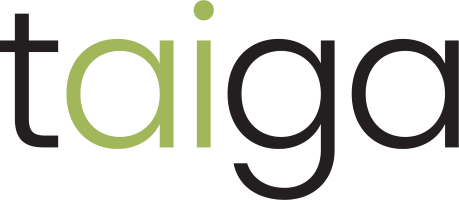The coronavirus pandemic has created chaos and confusion across our industry, significantly impacting Convenience Store operations. At Taiga, our mission is to bring order to chaos by identifying new trends rapidly through data analysis. This new Normal Newsletter shares some of the most common questions we’ve received and the resulting analysis.
This volume focuses on what convenience store operators are learning by being forced to operate remotely in a dynamic situation.
Covid has forced convenience store operators to work remotely. With this, operational weaknesses that were hidden before are being revealed, especially once staff had to work remotely. The good news is that strengthening these operational processes will be helpful even when the pandemic dies down.
Observation 1: Operators have become too reliant on visits from corporate staff to discover “what is going on” at the store level.
When corporate staff were locked in their homes or forbidden access to local stores, Zoom sessions were insufficient to keep corporate staff informed. No district manager showed up and noticed that there were only two half-gallon milk cartons on the shelf. Or noticed that the store had sold 22 in the prior six hours (eleven times higher than normal demand). Outages were occurring or imminent for a wide variety of unusual item. The outages were bad enough, but the fact that the corporate staff didn’t know was much worse. Convenience Store operations were changing – how can the central staff take proactive steps if they can’t notice the problems?
This is a “process problem.” The organization is too reliant on the good sense and deep experience of the district manager. If for any reason that district manager can’t get to the local store to gather local knowledge – corporate is flying blind with that store. This lack of knowledge means lots of easily fixed problems will fester and reduce profits.
Improving the process will involve:
- Identifying what a good district manager would notice and consider “important.”
- Setting up a method for local staff to routinely capture this important information.
- Establishing a “cadence” for the delivery of this information to corporate in a standard form. Some convenience stores, for example, compile a “scorecard” of important information that is transmitted to corporate every week.
- Like all processes, management must insist on the delivery and accuracy of this information. They must also ingrain the collection of this information into the organization. Otherwise this process will become another boring recurring management headache.
- Note that this is the kind of work computers do well, without complaints.
As we start thinking about what your district manager notices when he goes from store to store, we discover something else that has changed in the New Normal:
Observation 2: What were once reliable “rules of thumb” aren’t working any more.
For example, any good district manager used to be able to look at the gallons of gas sold at a particular store and predict accurately how much milk to order, what beer sales probably were and what the overall profit margin likely was for the week.
The days of using fuel volume as a key indicator of convenience store sales, purchase needs, and profitability are gone in the New Normal.
In the past, Convenience store operations used approximate ratios that held between sales rates of various items. Our experienced district manager could tell the health of a convenience store just by examining those ratios. If things looked “out of whack” to him, he probably could identify and resolve an issue. In the New Normal, the district manager can’t rely on his deep experience to quickly assess a given store. Instead, he needs to examine whole ranges of figures about a wide variety of items and categories to try to make sense of the changing situation. This is not easy to do, and certainly not easy to do over a Zoom session, as everyone has discovered.
Would you like to see what our Front Office Platform can tell you about your stores and customers?
Observation 3: Timely corporate reaction, on a daily basis, to changing conditions may contribute heavily to the bottom line in the New Normal.
Suppose your new data collection processes included the ability to map continuously the unused capacity of tanks at every store. This might allow you to take advantage of temporarily discounted gas offered by jobbers, improving your in-ground costs.
Another way to improve profits on in-store items is by avoiding outages. But the speed of change is so high in the New Normal you can’t depend on the old monthly or weekly reports. Nor can you depend on the old tried and true ratios. You need a new process for tracking inventory and rates of sales for various items. So many items are in flux that you probably can’t afford to have the central office staff scanning the numbers all the time looking for indications of outages. You need to implement some kind of computerized alerts flagging hot items.
Another computerized alert that is important in the New Normal is when gas prices are out of sync with local conditions (maybe a competitor updated their pricing).
Maintenance work could also benefit from improved data collection processes. How about Just-In-Time delivery of filters for pumps that are getting sluggish?
Every convenience store is going to struggle to keep up with all the changes flooding in, especially with management staff locked down either at corporate or home. The organization that establishes processes to routinely detect important changes will win the competitions for new customers, full stocking and better margins.

